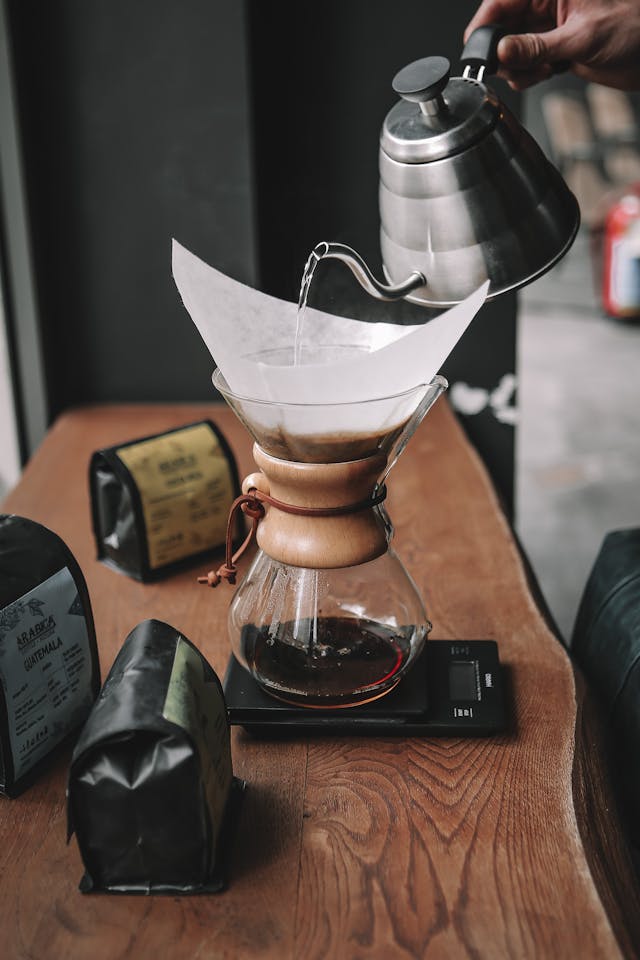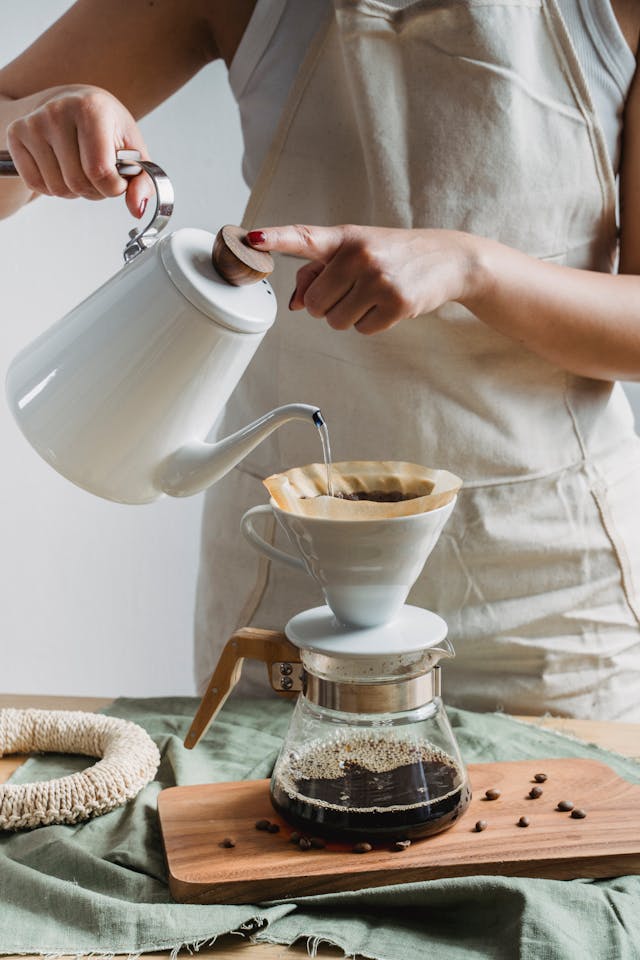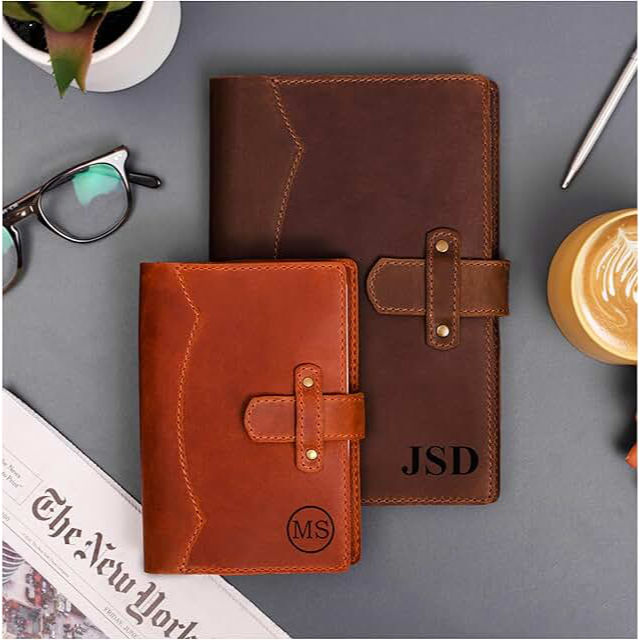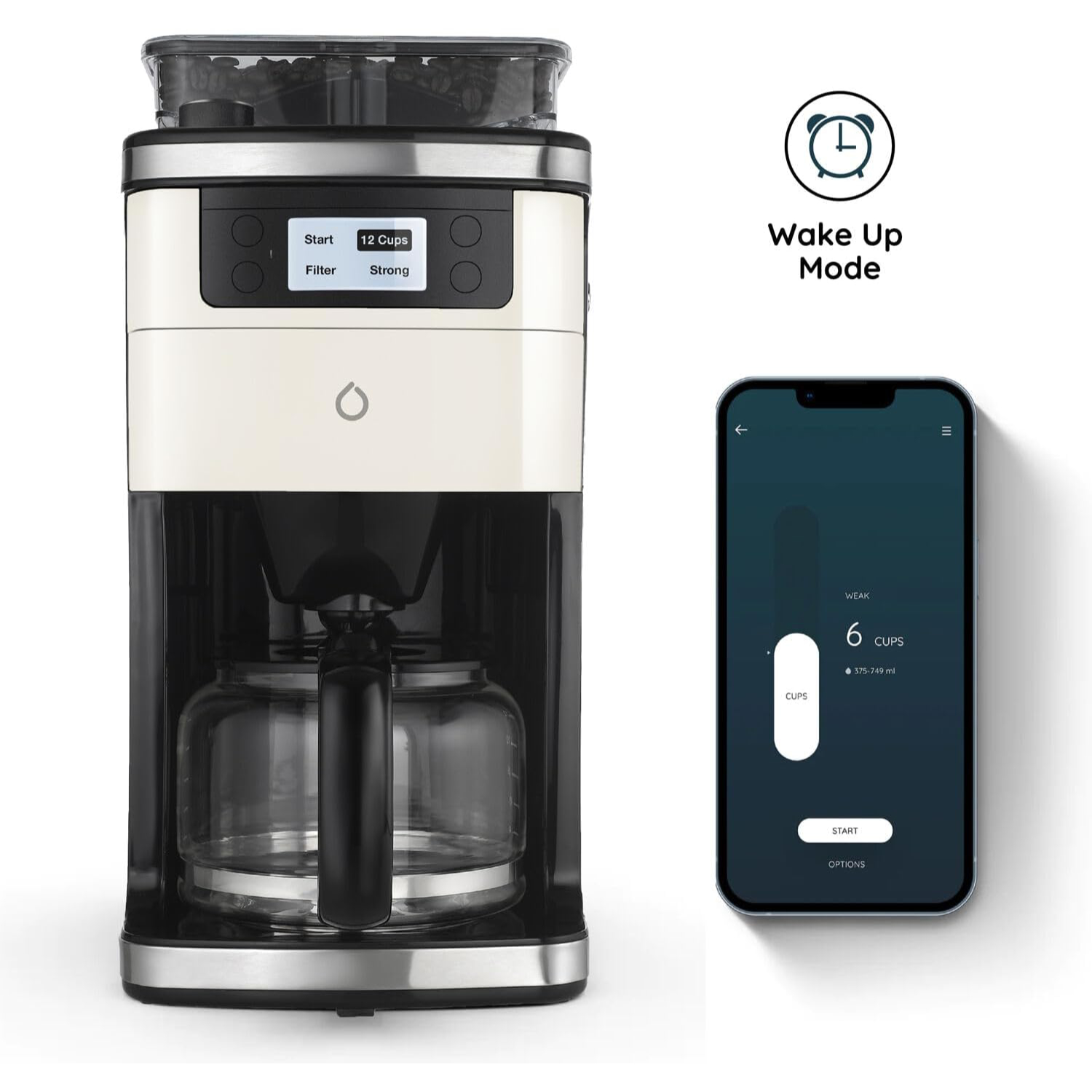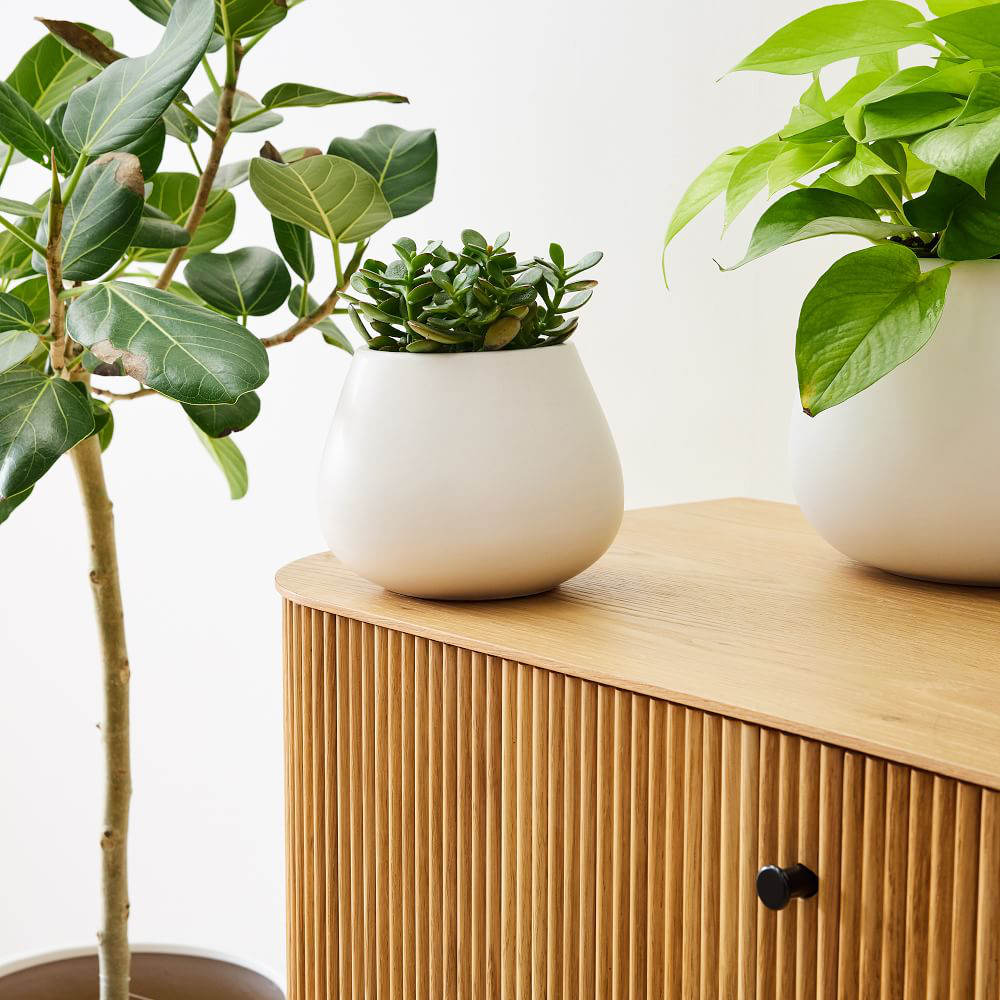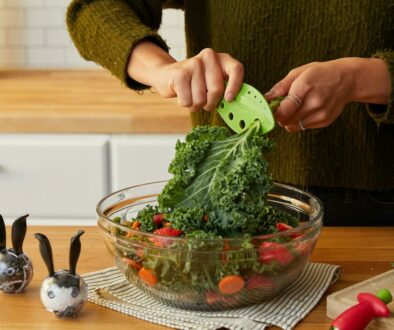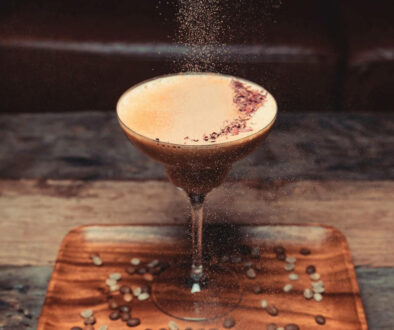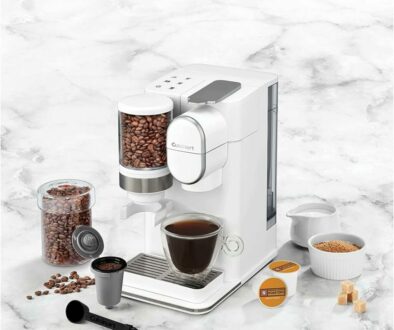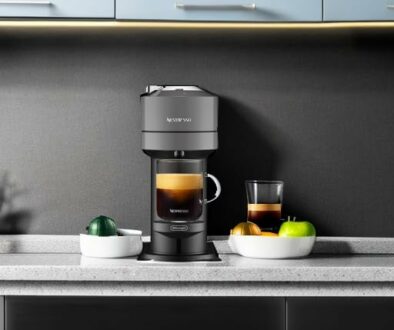How Coffee Grinds Impact Flavour: What You Need to Know About Grind Size
When it comes to brewing the perfect cup of coffee, the grind size of your coffee beans is a crucial factor that often gets overlooked. The grind size not only determines the rate at which water extracts flavor from the grounds but also directly affects the overall taste and texture of your coffee.
Whether you’re a casual coffee drinker or a budding barista, understanding how grind size impacts flavor can transform your daily brew into a masterpiece.
Why Grind Size Matters
Coffee brewing is essentially a chemistry experiment. When hot water interacts with coffee grounds, it dissolves flavorful compounds from the beans. The grind size dictates how much surface area is exposed to the water and how quickly these compounds are extracted. Too much extraction, and your coffee tastes bitter; too little, and it’s sour or weak. Achieving the right balance depends on matching the grind size to your brewing method.
Common Grind Sizes and Their Ideal Brewing Methods
Here’s a quick breakdown of grind sizes, from extra coarse to super fine and their ideal brewing methods:
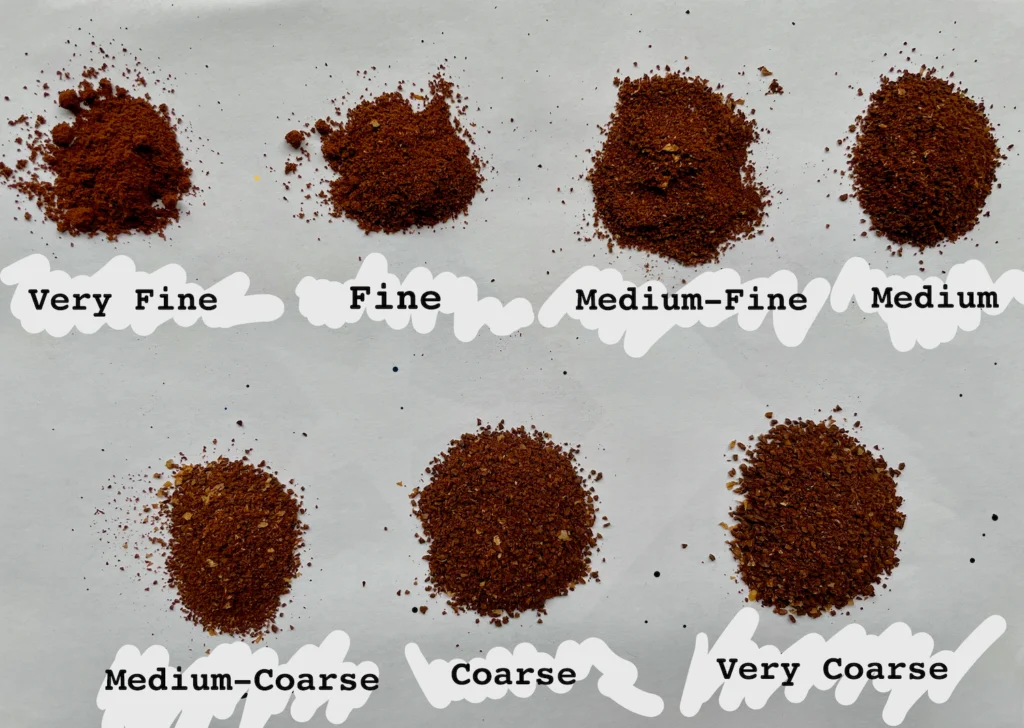
1. Extra Coarse Grind (Resembles sea salt)
Extra coarse grind is ideal for brewing methods like cold brew and cowboy coffee. This grind size results in large, chunky particles that look similar to sea salt. It produces a smooth, less acidic flavour, making it perfect for those who prefer a mellow coffee experience. The large grind size slows down the extraction process, allowing the coffee to steep over an extended period, as in cold brew, where the brewing time can last for hours. This slow extraction helps highlight the coffee’s natural sweetness while minimising bitterness.
2. Coarse Grind (Similar to kosher salt)
A coarse grind, with its chunky texture resembling kosher salt, is perfect for brewing methods like the French press and percolators. This grind size delivers a bold and full-bodied flavour, emphasizing the rich, deep notes of coffee. The larger particles are well-suited for French press brewing, as they prevent sediment from passing through the mesh filter, resulting in a clean cup with robust character. The slower extraction process associated with coarse grinds allows for a balanced and satisfying brew that’s free from over-extraction.
3. Medium-Coarse Grind (Resembles Rough Sand)
4. Medium Grind (Like Granulated Sugar)
Medium grind, with a texture resembling granulated sugar, is a versatile option suited for drip coffee makers and Aeropress brewing with a longer brew time of three minutes or more. This grind size delivers a well-rounded flavor, striking a harmonious balance between strength and smoothness. As the middle ground of grind sizes, it works exceptionally well for standard coffee machines, providing consistent extraction and reliable results. Whether you’re brewing a quick morning cup or experimenting with different beans, medium grind ensures a satisfying and dependable brew every time.
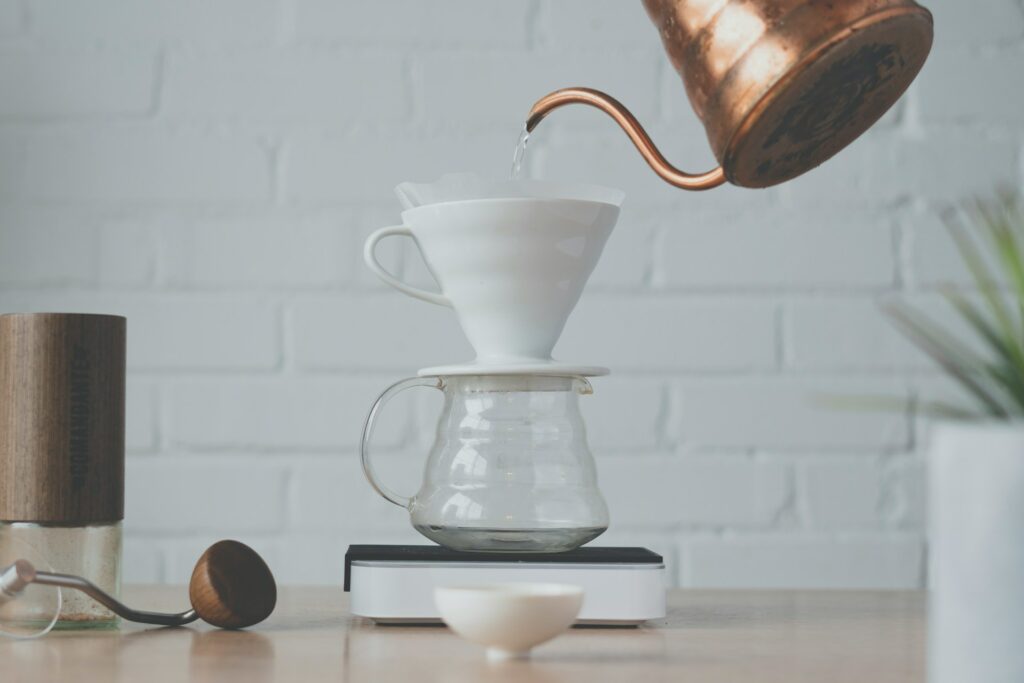
5. Medium-Fine Grind (Fine Sand)
Medium-fine grind, with a texture similar to fine sand, is perfect for pour-over brewers, V60 dripper and cone-shaped filters. This grind size excels at producing a bright, clean, and aromatic cup of coffee, making it ideal for those who enjoy delicate floral and fruity flavour notes. The finer particles allow for a faster extraction, ensuring that the coffee’s intricate and subtle flavors are brought to the forefront without over-extraction. Whether you’re using a Hario V60 or another pour-over method, a medium-fine grind ensures precision and clarity in every sip.
6. Fine Grind (Resembles Table Salt)
Fine grind, with its texture resembling table salt, is the go-to choice for espresso machines, mokka pots and Aeropress brewing with a shorter brew time of under two minutes. This grind size produces an intense and concentrated flavour, delivering the rich and bold coffee experience that espresso lovers crave. The smaller particles maximize the surface area exposed to water, ensuring efficient extraction under the high pressure of an espresso machine. The result is a rich, syrupy brew that highlights the coffee’s depth and complexity, perfect for crafting robust espresso shots or a quick, flavourful Aeropress cup.

7. Extra Fine Grind (Like Powdered Sugar)
Extra fine grind, with a texture similar to powdered sugar, is specifically designed for brewing Turkish coffee. This grind size creates a bold and almost creamy flavor profile, capturing the essence of traditional coffee preparation. The superfine particles dissolve almost completely during the prolonged boiling process, resulting in a robust and intensely flavourful brew. This method produces a thick, rich cup with a unique texture that is integral to the authentic Turkish coffee experience.
Table below show how to pair grind sizes with recommended coffee makers:
| Grind Size | Texture | Recommended Coffee Makers | Flavor Notes |
|---|---|---|---|
| Extra Coarse | Sea salt | Cold brew, Cowboy coffee | Smooth, less acidic |
| Coarse | Kosher salt | French press, Percolators | Bold, full-bodied |
| Medium-Coarse | Rough sand | Chemex, Siphon Drip-over brewers with metal filters | Balanced, nuanced flavors |
| Medium | Granulated sugar | Drip coffee makers, Aeropress (3+ minutes) | Well-rounded |
| Medium-Fine | Fine sand | Pour-over brewers, Cone-shaped filters | Bright, clean, and aromatic |
| Fine | Table salt | Espresso machines, Aeropress (under 2 minutes) | Intense, concentrated |
| Extra Fine | Powdered sugar | Turkish coffee | Bold, almost creamy |
How to Choose the Right Grind Size
The perfect grind size depends on your preferred brewing method, the freshness of your coffee beans, and even your personal flavour preferences. Start by pairing the grind size with the brewing equipment you use most often. Use the table above for guidance. From there, you can experiment with slightly finer or coarser grinds to fine-tune your flavour profile.
For instance:
- Prefer a strong, bold coffee? Opt for a finer grind to intensify the extraction process.
- Love smooth, mellow notes? Go for a coarser grind to slow extraction and minimize bitterness.
Common Mistakes to Avoid
Using the wrong grind size: An espresso machine with coarse grounds will result in weak coffee, while a French press with fine grounds leads to over-extraction and a muddy texture.
Ignoring grind consistency: Uneven grinds can cause over- and under-extraction in the same brew. Invest in a burr grinder for the most consistent results. Consider a burr grinder that lets you change the ground settings. Don’t leave it to chance by using a blade grinder. We compared between the burr vs blade grinders here. Also, if you use a burr grinder, make sure that the bean hopper is topped up for even gravitational feed pressure. See some of the best coffee grinders in the business to grind at home and a suitably compact burr grinder review from Shardor.
Neglecting freshness: Always grind your coffee just before brewing. Pre-ground coffee loses its flavour quickly due to oxidation. Also, once opened, remember to keep your coffee beans in air tight container and away from sunlight. We have a guide on how to store your coffee beans for maximum freshness.
Tools to Get the Perfect Grind
To achieve precise grind sizes, consider investing in a quality grinder:
- Blade Grinder: Affordable but inconsistent; suitable for beginners.
- Burr Grinder: Offers uniform particle size, adjustable settings, and better flavor control.
Learn more at Which is a Better Coffee Grinder: Burr vs Blade and Why It Matters and when you are ready, see Best Burr Grinders to Mill Your Beans at Home.
Experiment for the Perfect Cup
The beauty of coffee brewing lies in experimentation. Adjusting the grind size is a simple yet powerful way to enhance your coffee’s flavor. Pay attention to how grind size affects your cup, and don’t be afraid to try something new. By understanding the relationship between grind size and flavour, you’ll elevate your coffee game and enjoy every cup to its fullest potential. Next, consider pairing grind size with coffee roast levels, learn how coffee roasts affect flavour be it light, medium or dark. And, if you have beans of various roast levels, which grind size should you choose.
